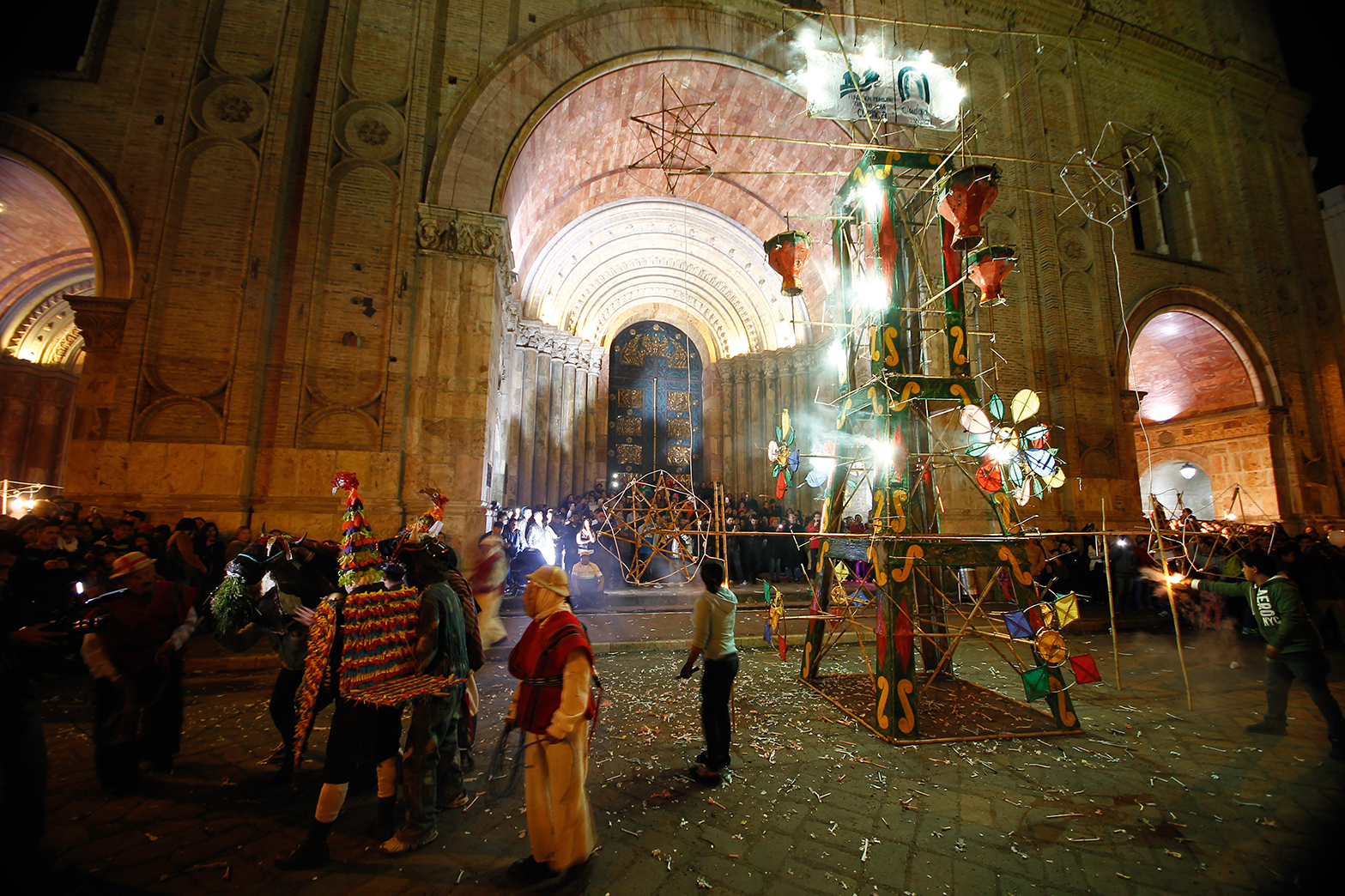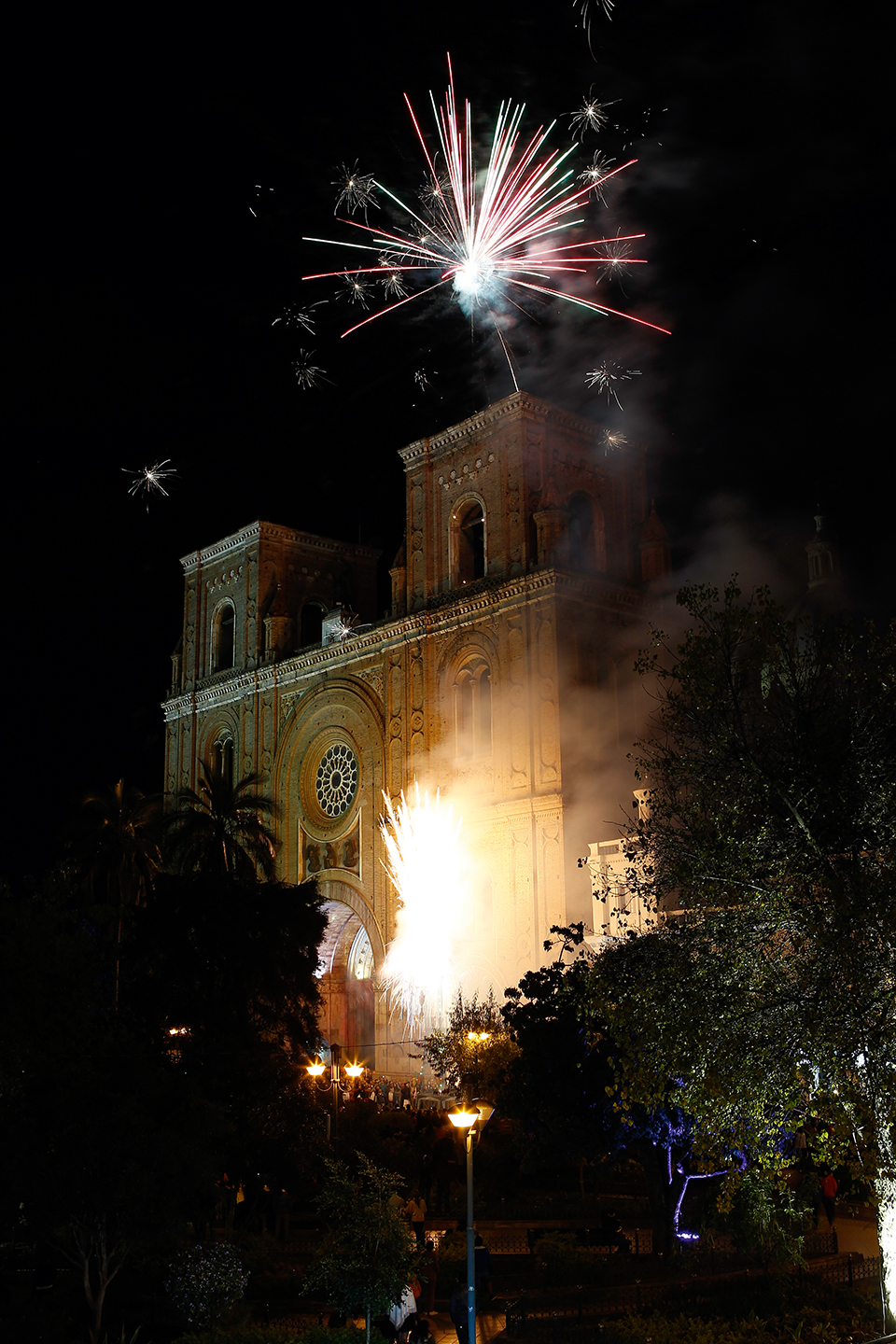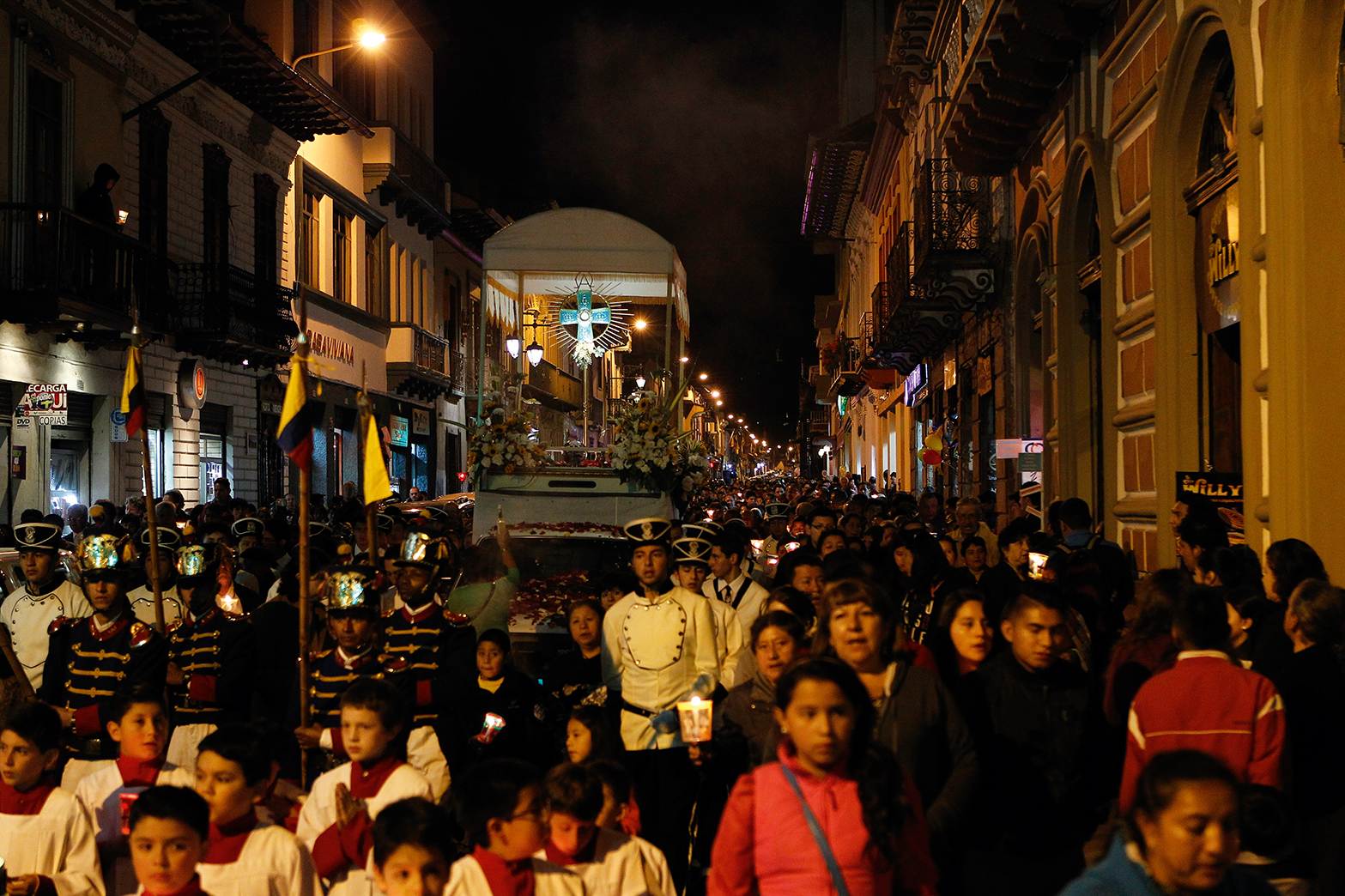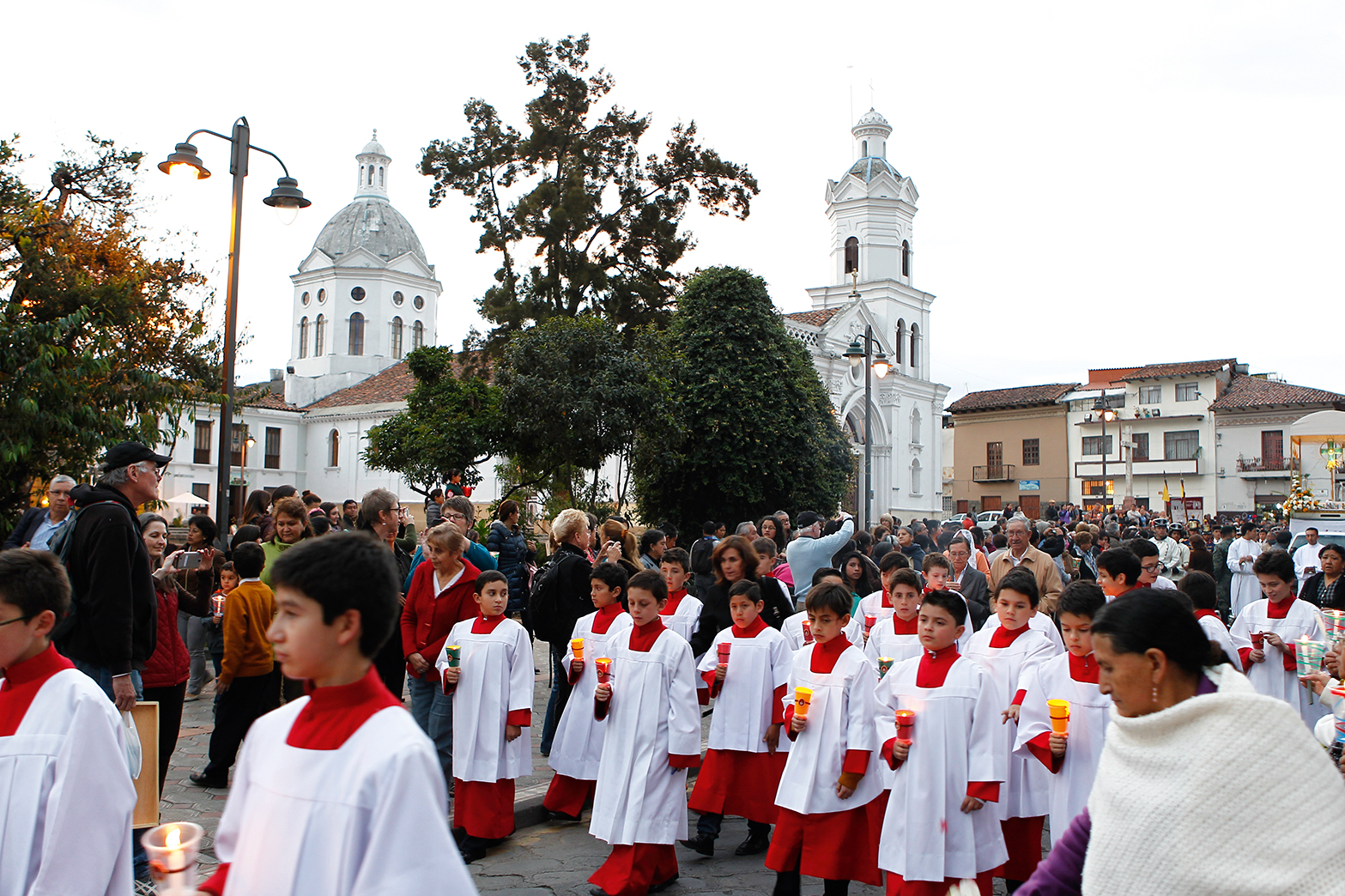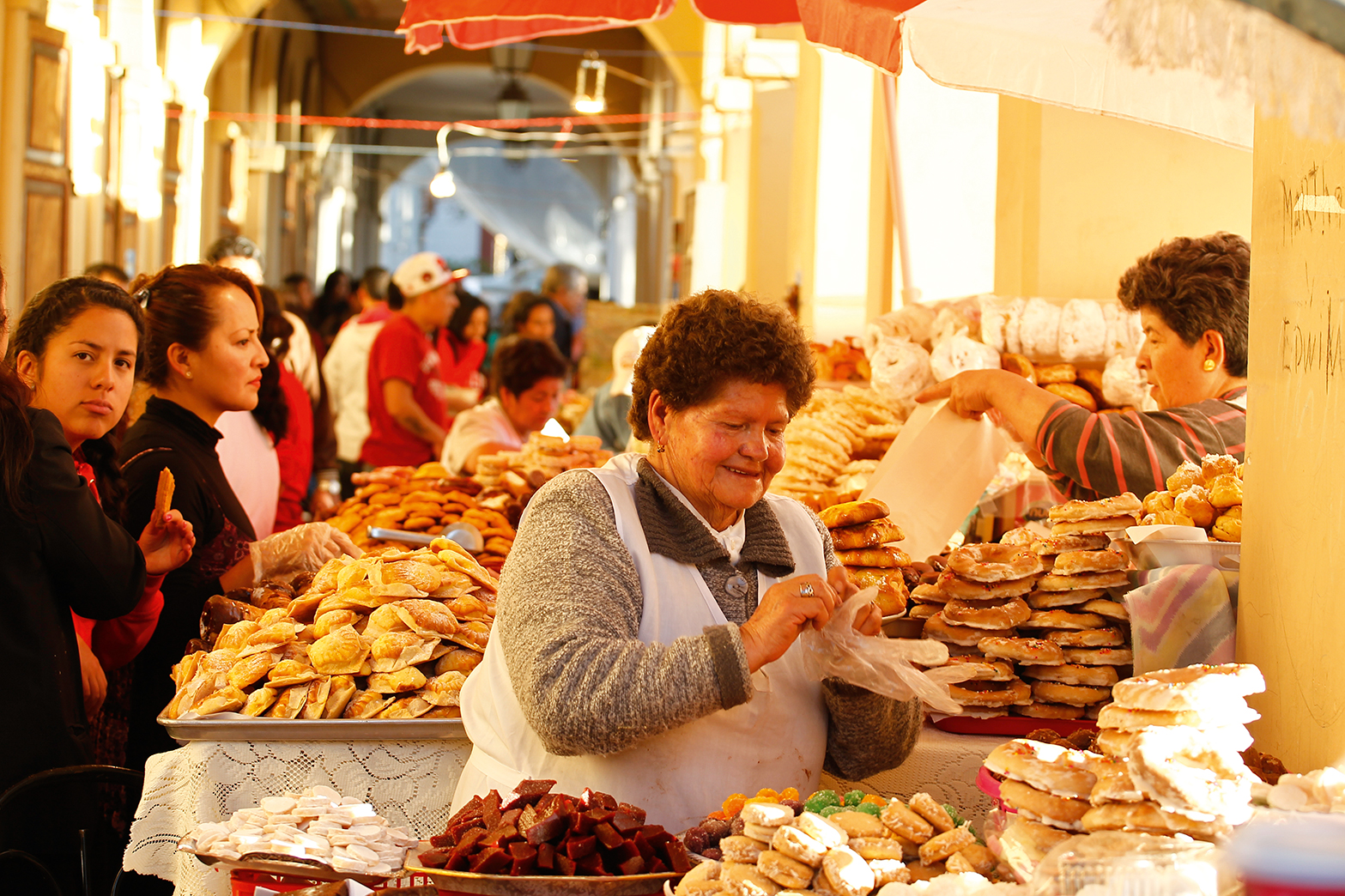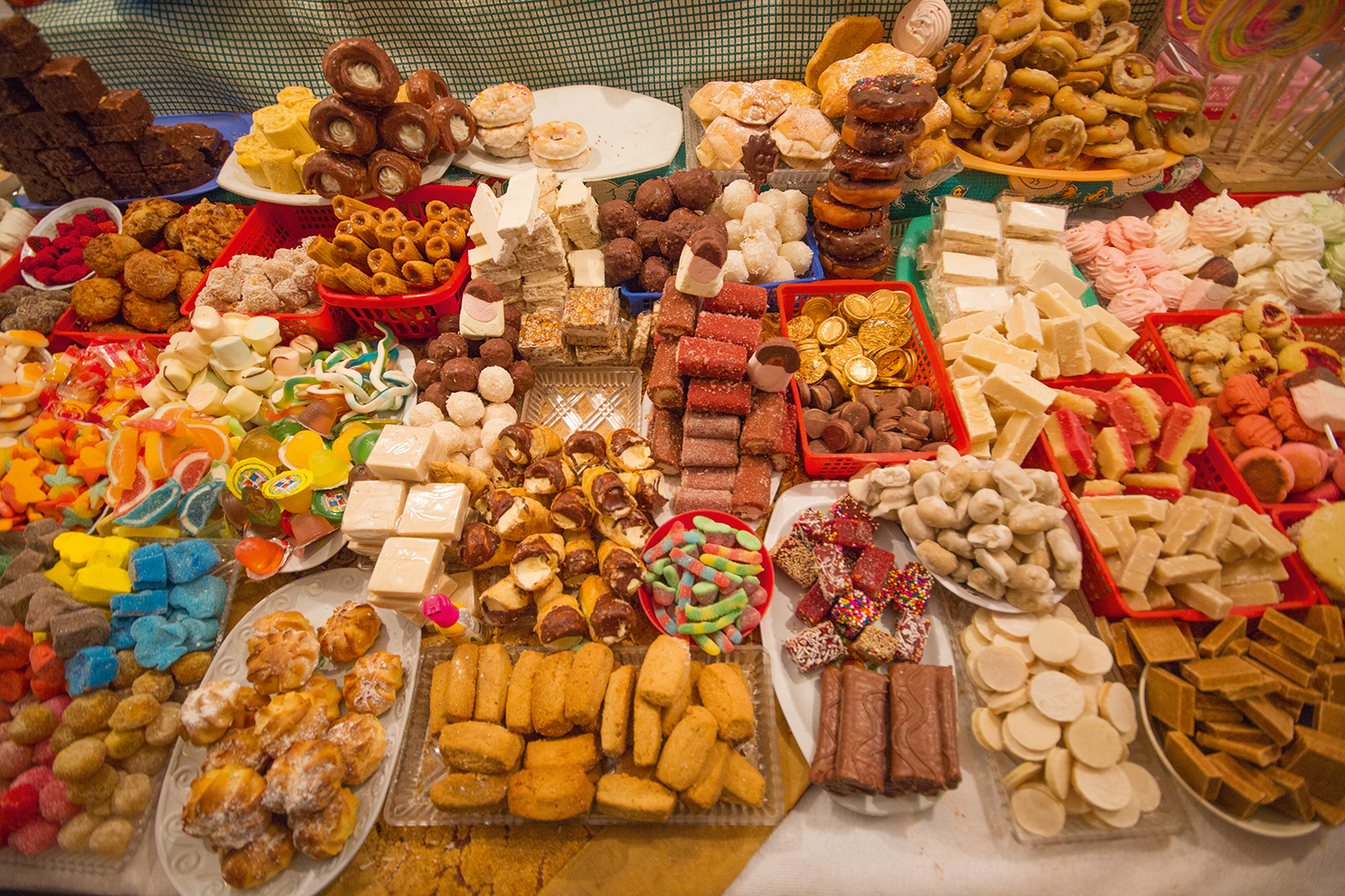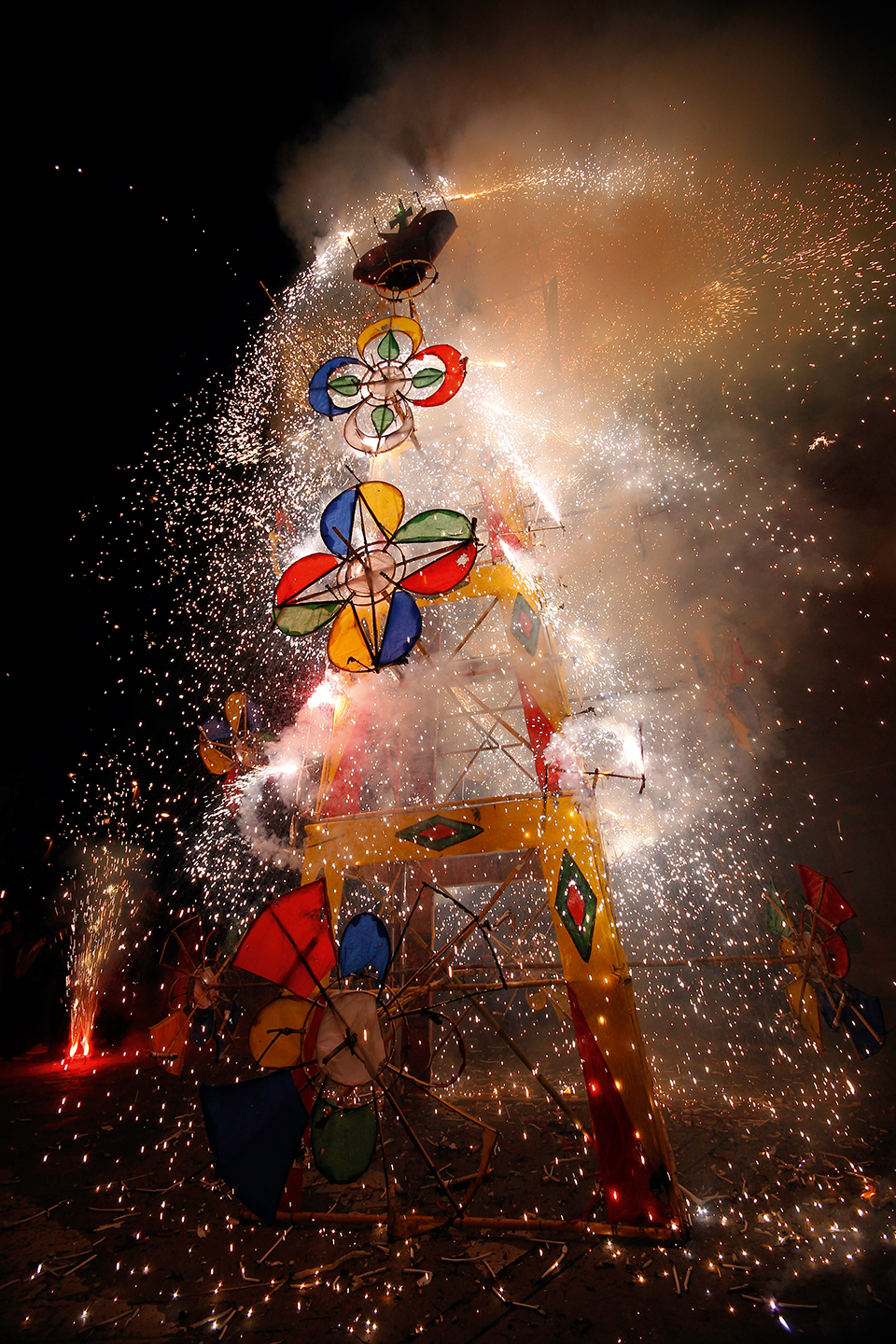Photos: Fundación Municipal de Turismo para Cuenca
Corpus Christi, one the most colorful and important holidays in Ecuador, is a reflection of the diversity and cultural richness of this country. Every year, thousands of persons come to Cuenca to participate in this great feast.
Corpus Christi was established at the time of the Spanish conquest and conversion of the indigenous population who, subsequently, incorporated some of their own customs into this feast. Since 1557, it has been one of the main religious traditions of Cuenca but, even before that date, it was known as the “City Feast”. Furthermore, it´s also very closely related to the harvest cycle and its own celebration.
This celebration has a marked religious character as its name means “body of Christ”. It symbolizes the real presence of Christ in the sacred host. It also alludes to the Last Supper, when Jesus Christ established the Eucharist by means of consecrating the wine and the bread, and when he charged the Apostles to comply in the future with this Catholic dogma: “Do this in remembrance of me”. For faithful Catholics, this feast is of great significance because it reminds them that Jesus is present in the shape of this spiritual food and of salvation.
Cuenca becomes a scenario of devotion during the seven feast days. Religious activities such as processions, masses and liturgical ceremonies are plentiful. The Holy Sacrament remains on display at the High Altar of the Immaculate Conception Cathedral so that the faithful may worship, praise and pray to Him.
Corpus Christi begins on the ninth Thursday following Holy Thursday. On that day, the Bishop celebrates a solemn mass that gives this seven day feast its formal initiation.
Folk dance troops and village bands go on stage to enliven the celebrations. One of the most anticipated attractions is the fireworks castle, up to 12 feet tall which, as the flares, rockets and other fireworks leap into the sky, becomes an awesome show that leaves all spectators open-mouthed.
In the evenings, the fireworks supply sound and color to the feast. Also impressive is the external lighting that enhances the architectural beauty of the Abdón Calderón central park, the Immaculate Conception Cathedral and the city´s colonial downtown. During these days, feelings of pride, unity, fraternity and happiness prevail throughout Cuenca.
One of the main attractions are the traditional “Corpus sweets”. Preparing these sweets is a custom initiated by cloistered nuns and by families of the Cuenca nobility. They were presents for relatives and acquaintances. Today, these delicacies are prepared with recipes that have been handed down through the generations and are sold at stalls in the parks and plazas.
These sweets delight all tourists who taste them. Besides being delicious, their colorful and varied textures are striking. Quesadillas (hot tortillas filled with cheese), turrones (confections with sugar, honey and egg white plus toasted almonds), rosquillas (fried or baked sweet donuts), suspiros (meringue kisses), galletas de ajonjolí (sesame seed biscuits), alfajores (two or more cookies bound by a sweet filling and generally dipped in chocolate glaze or powdered sugar), quesitos (two wafers with a caramel spread) are just some of the delicacies that are waiting to be found in the stalls, usually decorated with Cuenca handicrafts. Visitors must try at least one of these delights and also must not leave without purchasing a tub or two of assorted sweets to take back home as presents. They shall certainly be appreciated!
Sharing the Corpus Christi feast is an experience that submerges the tourist in tradition, religion, folklore, culture and identity. If you have not yet lived this experience, it´s definitely worth scheduling a visit during your next trip. And, along the way, take full advantage of the cuisine that´s available in the marvelous city of Cuenca, also recognized for its handicrafts and jewelry.
Cuenca was named a World Heritage city by the United Nations. It should not be surprising, given that this town has a unique charm that seduces all visitors, as it seems to have sprung forth from a painting. Tourists come from around the world and many of them have made it their home.

